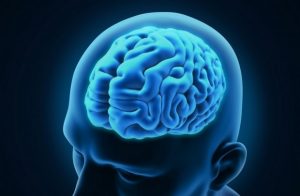Why should we sell to the Old Brain?

It might surprise you to know that everybody has an Old Brain however old they actually are, as well as a New and a Middle-aged brain too!
It turns out that these are just terms for the various different functional areas of our brain – and according to experts, they each have very different jobs to do and respond in very different ways.
But why is the Old Brain so important to marketing – and does this part of the brain hold the key to how people buy?
Here is the science bit:
- The New Brain – thinks (it’s logical – it wants facts)
- The Middle-aged Brain – feels (it responds to emotions and that ‘gut feeling’)
- The Old Brain – decides (takes input from both the others and pulls the trigger)
So, it appears that that Old Brain is absolutely essential for that all important buying process – and we ignore it at our peril. But what does it like, and does it have any special requirements?
- It is self-centered
The Old Brain wants benefits, not features. It’s not really interested in clever details, it just asks ‘does this solve a problem that I have – what’s in it for me?’ This means getting to know your audience and looking for what really bothers them –this set of information can be very specific.
- It loves contrasts
The Old Brain looks for the stark, simple difference between products or offerings. Complex comparisons work less well – you need to make the difference clear and obvious – before vs after, with vs without, new vs old ?
- It looks for the tangible
The Old Brain is less able to process written words. The use of too many words, especially complicated or long ones, just slows it down. The Old Brain looks for the familiar and friendly. Keep it bright, brief and to the point. Feel free to repeat important points.
- It concentrates hardest on the beginning and the end
The Old Brain enjoys openings and finales but can sometimes overlook what is in between. Placing the most important content at the beginning is a must, as is repeating it at the end.
- Visual stimuli works best
The Old Brain is more visual… The newer parts of the brain take time to process information, the Old Brain wants the quick, visual input it needs to make decisions – especially familiar images that it recognises easily.
- Add some emotion
The Old Brain is often triggered by emotion. Scientific studies show that emotions create electrochemical responses that directly impact the way we process information. Customers have a complex emotional life that demands careful and detailed examination – it is not enough to rely on stereotypes – there is a rich diversity to explore. Personal engagement is essential…
So it seems if you want to trigger the Old Brain you need to show it quick, emotive ways to get the benefit of your offer – do it early, and do it often! Direct marketing gives you the opportunity to combine the logical and the emotive, and help people visualise how your product or service benefits them. There is still no substitute to knowing your customer, discovering what they care about and tapping into the things their Old Brain will use as a trigger to buy…
